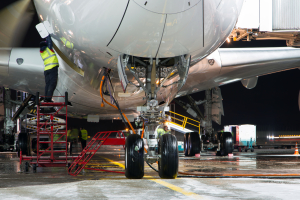Determining the properties of a thermal barrier
As part of its R&D activities, Liebherr Aerospace sought to measure, up to 400°C, the thermal conductivity of a thermal barrier coating, deposited in a thin layer on an aluminium substrate.
Key words
Linked expertises
Capacités’s role was to diagnose and optimise the production process on a client’s industrial site. The company needed to verify that its new autoclaves were functioning correctly in comparison to its older ones. This being a rather rare and unusual project for this sector, Capacités’s engineers rose to the challenge by combining their expertise in instrumentation and thermal modelling.
They firstly performed a detailed analysis of the functioning of the workshop, machinery and production steps. They then developed and deployed thermal sensors specific to this type of environment (pressurised machines and high-temperature steam) in order to be able to compare the temperatures for all of the autoclaves.
Their efforts gave rise to a precise analysis the thermal history of the parts during their production.
The engineers further outdid themselves by predicting the curing temperature of all of the parts, thanks to a numerical model developed specifically for this type of production and for elastomers. Based on the data generated by this model, Capacités’s experts were then able to recommend ways to optimise curing. The resulting process improvements not only contributed to enhancing the quality of the equipment manufacturer’s parts but also to increasing their energy efficiency.
To successfully complete this project, the Capacités’ experts benefited from support and technical equipment from the GEPEA, joint research unit of Université de Nantes and the CNRS.
Our projects
These projects may also interest you

As part of its R&D activities, Liebherr Aerospace sought to measure, up to 400°C, the thermal conductivity of a thermal barrier coating, deposited in a thin layer on an aluminium substrate.

A leading aeronautical equipment manufacturer turned to the experts at Capacités to assist in completing the final stages in the development of their novel composite material.

A key player in the aeronautics sector called on Capacités’s specialists to determine the thermal conductivity properties of a composite material reinforced with short fibers during the injection process.

Composite materials’ behavior must comply with set standards for use in the aerospace industry, as defined by The National Centre for Space Studies (CNES, Centre National d’Etudes Spatiales). The verification process includes advanced mechanical tests that require specialized expertise in the mechanical behavior of materials. A leading player in the aerospace industry chose to collaborate with Capacités’ engineers to conduct measurements for u…
This site uses cookies and gives you control over what you want to enable